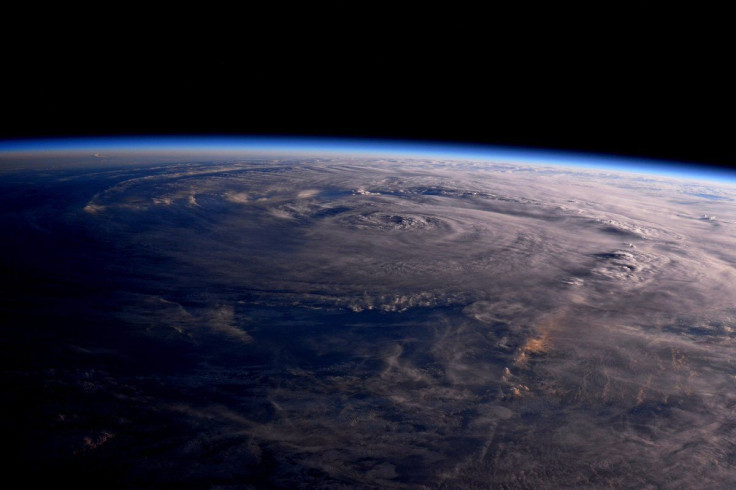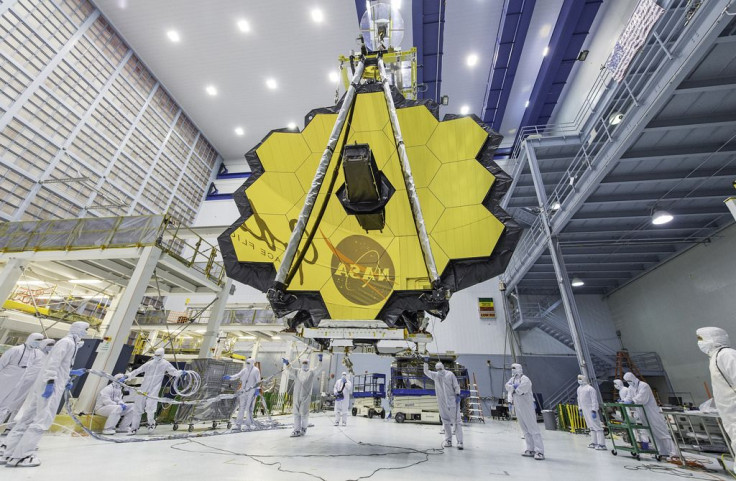NASA’s Alien-Hunting Telescope Rides Out Hurricane Harvey In Houston

NASA’s James Webb Telescope will probably wake up in a couple of months completely unaware that Hurricane Harvey sent floodwater gushing through Houston or that any time had passed at all.
The space agency’s Johnson Space Center, where the telescope is frozen in a cryochamber, is right in the middle of the action and has been closed, it reported on its emergency management website, with the exception of “mission essential personnel.” More than 2.5 feet of rain had already fallen at the site by noon on Monday, and the tropical storm continued to pound Houston through the rest of the day and into Tuesday, with more rain and wind projected into Wednesday.
Johnson Space Center is the control center for, among other missions, the International Space Station, where astronauts are orbiting the Earth and watching the storm rotate below.
“Houston, we have a hurricane.” Our thoughts & prayers are with folks feeling Harvey’s wrath, as dawn breaks after a long night of rain. pic.twitter.com/XR1RvZpkrD
Far reaching #Harvey - this massive storm covers much of the horizon from up here! Be careful and stay #TexasStrong #HoustonStrong. pic.twitter.com/p1XctKtkQg
It is also the site where the James Webb Telescope, which NASA built in part to study alien worlds throughout the universe, recently took up residence. It was locked in a temperature chamber in July and is being frozen to test how it will operate in outer space. NASA has a live stream of the chamber’s exterior with a temperature readout, so people can watch as temperature drops. As of mid-Tuesday, it was -424 degrees Fahrenheit — its goal temperature — while the air outside in Houston was 72 degrees.
When the stream went live, the telescope was at -250 degrees Fahrenheit and Houston was in the mid-90s.

On Tuesday, the video stream included a storm update: “Our personnel and hardware are safe and everyone is taking appropriate precautions.”
We appreciate the concern for @NASAWebb. Our personnel and hardware are safe and everyone is taking appropriate precautions. #JWST #Harvey
The experiment has a little ways to go, as the telescope was scheduled to be inside the vacuum chamber for about 100 days.
Once it completes testing, it may be launched next year and will explore potentially habitable exoplanets, like the seven planets in the Trappist-1 solar system. Its goal is to learn more about the compositions of their atmospheres and whether they hold water.

Sarah Kendrew, a European Space Agency astronomer, said on Twitter that even though Houston is swamped, the telescope is not affected.
“The humans are having to use mops and buckets but the telescope is totally fine,” she wrote.
The space center might be a little safer because it’s on higher ground — Scientific American reported that its lowest point is 13 feet above sea level.
Meanwhile, NASA Flight Director Royce Renfrew tweeted that people are being rescued from high water just half a mile away and mission control looked “surreal” with how empty it was.
The kinds of staffers who are remaining at the center are those that have to maintain contact with the astronauts on the ISS.
Flight Director Zebulon Scoville tweeted that the control team is “hunkered down” to keep the space station flying.
© Copyright IBTimes 2024. All rights reserved.











